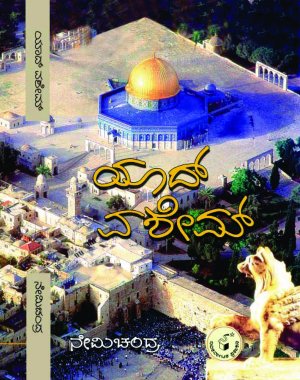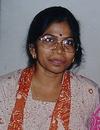Yad Vashem - A Novel by Nemichandra
First Online: October 28, 2007
Page Last Updated: December 07, 2024
Extracts from the keynote address by Nemichandra at the "Second Asia Literature Forum"
held at the historical city of Gwangju in South
Korea
![]()
I would like to share my personal experiences as a writer, whose writings are influenced by the changing times.
I remember in my teens, as a young girl I wrote about, not exactly the love stories or romance, but stories exploring the man-woman relations. Then in my twenties we were part of the women's movement- feminism, gender equality predominated not just my writings, but also most of our writings. I brought out the third collection in 1992, my stories had all turned towards exploring more about life. But since 2000, I wrote no story; I was totally preoccupied with my novel
"Yad Vashem".
"Yad Veshem" is a monument in Jerusalem to the memory of the six million Jews who were the victims of Nazism. In my novel, it symbolizes millions of innocent lives perished in crimes of racism, genocide and mindless murder. History is replete with mass atrocities, but not all of them are remembered.

Cover of Author's Book Yad Vasheam
The novel is about a little Jewish girl growing up in old Bangalore in a Hindu family. It is her search for her lost family in later years, which takes her through Germany, America and ultimately lands her at Israel, in the middle of the Israel-Palestine conflict.
It was in the year 1995, as I was passing through Goripalya, (a densely populated area with under-privileged Hindu and Muslim
population in Bangalore, living in close proximity in narrow lanes and by-lanes), that I noticed, in a corner, next to a Muslim cemetery, a small inscription, which read ‘Jewish Burial Ground'. Out of curiosity, I stepped into the cemetery and I found a lot of tombs buried deep in the ground, covered by thick grass and bearing inscriptions in
Hebrew. Some of them were as old as 100 years! I was surprised, as at that time I did not know that there was any Jewish Community in Bangalore. There was no synagogue in Bangalore and even today there is none. It took me almost two years, to trace the history of Jewish Community in Bangalore which thrived at one time during the British rule and moved out of India, after the formation of Israel in 1948.
As Alumni of the prestigious Indian Institute of Science, I knew that Sir C.V.Raman, the Nobel
Laureate in Physics, had succeeded in bringing some of the scientists fleeing Germany (to escape from the tyranny of Hitler), to Indian Institute of Science in Bangalore.
As I was standing amidst the tombs, a sudden vision passed my mind, I could see a Jewish scientist fleeing the Nazi Germany, with his little daughter and arriving at Bangalore. Instantly, I knew that, this is the story of my Novel that was waiting to happen. Over the next 8 years, I pursued my story. First, I visited various places in India, where there was large Jewish population for hundreds of years! Next I set out to Germany, America and Israel.
I had decided to go to Germany, where my story unfolds. I chose Dachau Nazi camp, which was not an extermination camp, for my novel. In 1997, I was able to save enough money to undertake my personal trip to Germany.
I traveled to Berlin, Munich and visited the Dachau Nazi camp, where 32,000 Jews had lost their life. Then I could visit the Holocaust Museum at Washington D.C. and the Museum of Tolerance at Los Angeles, in 2001.
And in 2002, I was in Israel.
Yes, I could feel the conflict in the air. The same week I was at Tel Aviv, a suicide bomber exploded in a Dan bus. From the balcony of Dan Panorama Hotel, where I stayed, I could see a lot of elderly people lighting lamps and putting flowers, near the beach, where a suicide bomber had exploded in a disco, killing young teenagers. And that was also the week, Israeli raids left 13 dead in Gaza and amid an outpouring of anger and grief and vows of revenge, Palestinians buried the people killed in the Israeli military operations in the Gaza Strip, including a helicopter missile strike in the middle of a residential street that was crowded with people who had left their homes following an incursion by Israeli tanks.
Here I was at Jerusalem, the center of the three world religions. Entering the Old City of Jerusalem was an enthralling experience. It is the only place in the world where some of the holiest shrines of the three great Semitic religions, Judaism, Christianity and Islam, can be seen together. Emerging from an ancient Arab marketplace I entered a large open area where Jewish people were praying before the historical Wailing Wall. Behind the Wall is the Dome of the Rock Mosque, it is believed that from this place Prophet Mohammed flew to the heaven. Opposite the Wall is one of Christianity's holiest Shrines, the Church of the Holy
Sepulcher - the site of the Crucifixion and Resurrection of Christ. This was to be the place where my novel would ‘climax'!
Story starts in 1940s Bangalore, with the Jewish scientist and his little daughter Hanna Moses arriving in India. This is a land of million gods, worshipped in all forms and called my million names. Here the young girl grows up, who has come from a culture and religion, which commands ‘Thou shalt not take the name of the Lord thy God in vain, thou shalt not make unto thee a graven image, nor any manner of likeness'.
It is the intrigue with which the young girl grows up absorbing the essence of India even as her past haunts her - forms the first half of the novel.
The second half of the novel deals with Hanna's search for her family left behind in Germany - her mother, elder sister and baby brother. What happened to them? Did they survive the Nazi camp? - Hanna is haunted by questions, which no one could answer. It is in her old age, that she gets the opportunity to undertake the journey, to Europe, America and finally arrives in Israel in search of her family.
Hanna had traveled long in the wilderness and had arrived at the ‘promised land'. She is in her homeland, that she had longed for decades… but is she feeling ‘homely'?
In Berlin, she had seen ‘the wall' come down. Here was the concrete barrier separating East Jerusalem from the West Bank. Can conflict and terror be fenced off?
She finds the truth about her mother, sister and brother. But she finds a greater truth. In the 20th century, Hitler was born in Germany. Today, he could be born anywhere - in America, in Israel, even in India, which professed non-violence. Without killing the Hitler in our heart, can we really say ‘Never again'. The ‘final solution' has never been war.
Can ‘iron walls' keep one safe? Why does History have this uncanny habit of repeating itself? Can manpower, money and munitions win the wars? After winning a hundred battles and with all the sophisticated war machinery, why are we still afraid to go to the beach, to the mall, to board a bus? And after winning a hundred battles, we find that there are over a hundred more around us.
The path to peace may be long and winding, may pass through the political wilderness, but we still need to take that path, as peace may be the only option and is the essence of life and today has become essential for life to survive on this planet.
Hanna sees the slender rays of hope that penetrate the dark clouds that hover above the blood-soaked holy land.
![]()
This year, on the New Year's Eve I happen to be at the Jewish cemetery. A Canadian Jewish lady who was visiting India, came to know about my novel and landed at Bangalore to meet me. She wanted to see the cemetery, I took her there and introduced this Muslim family who is taking care of the Jewish burial ground. It was dark in the graveyard and it was past 9 pm and there was no electricity! The Muslim lady and her daughters brought out kerosene lamps and held them close to each of the tombstones, as she clicked the photos. As I watched the face of this Jewish lady and the Muslim woman together lit up in the yellow light of the smoking kerosene lamp- I just felt ‘world could still be saved'. Peace would find its way into our hearts and homes.
I would like to end this keynote presentation with words of Mother Teresa. She said ‘If we have no peace, it is because we have forgotten that we belong to each other'.
![]()
![]()
 |
Nemichandra is a popular writer of Kannada Language. Her novel "Yad Vashem" is about a Jewish girl growing up in old Bangalore in a Hindu family. It is her search for her lost family in later years, which takes her through Germany, America and ultimately lands her at Israel, in the middle of the Israel-Palestine conflict. |
See Also:
- Judaism in India
- Gandhi on Arabs and Jews -- A non-violent look at the Mid-East

